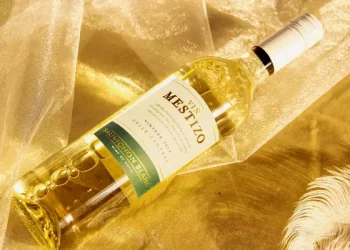There are some special wines in the wine world, such as organic wine, low alcohol wine, low calorie wine, etc. Some of them are made by special brewing process, some have special medical uses. Let’s take a look at them in detail.
“Organic” is the hottest topic right now, and the wine world is not far behind.
More and more vineyards are using organic or biodynamic methods to manage their vineyards, but there are no uniform standards in the wine industry as to how to implement them.
The basic requirement of organic farming method is to use natural insecticides instead of chemical insecticides, herbicides and pesticides.
Biodynamic farming, on the other hand, is more extreme, requiring the use of natural pesticides as well as some bizarre “magic cures”.
Rudolf Steiner, a pioneer of biodynamic farming, used homeopathic methods to manage his vineyards, such as burying dung filled horns in his vineyard for six months according to the cosmic calendar.
Science does not yet know why, but it is thought that the grapes grown this way look healthier and have more flavour, probably because the growers take care of each plant in the vineyard.
The causes of low alcohol content in wine generally include three conditions.
One is that the grapes for these wines come from places far from the equator, such as Germany’s Mosel Valley, where light is limited in intensity and time, so the grapes are lower in sugar and therefore lower in alcohol.
One is because of the high residual sugar content of their wines, such as dessert wines.
Still others, like Asti, have their alcoholic fermentation stopped manually to produce a sweet, low-alcohol wine.
Wine gets most of its calories from two components — alcohol and residual sugar.
Therefore, high-calorie wines tend to be strong red or sweet wines from hot regions.
The lowest calories are found in dry whites and light-bodied reds from cooler climates.
However, white wine does not necessarily have fewer calories than red wine, and dry wine does not necessarily mean low-calorie wine, and low-calorie wine must be dry and low in alcohol.
Certain dry wines are better for diabetics,
Examples include champagne, Chablis, Muscadet, Sancerre or Pouilly-Fume, Fino and Manilla and most red wines
Because they have a lower alcohol content.
In addition, attention should be paid to the residual sugar content of wines, as wines suitable for diabetics should be low not only in alcohol but also in residual sugar.
In addition, some people have varying degrees of allergic reactions to red and white wine.
Red wine can cause allergic reactions because it contains more substances than white wine, such as higher histamine content or higher phenolic content;
White wine can cause allergies due to its higher sulfite content, so people with respiratory problems should use it with caution.
Wine is considered to be a cleansing wine, so it is accepted by Jews and can be used in Jewish religious ceremonies.
Most COsho wines, STORED in half-empty BOTTLES, are unsavory, scarlet, sweet and full of oxidation.
Since the 1980s, however, the quality of Kosho has improved dramatically.
Chateau Valandraud, a wine producer located in the St-Emilion region, produces an excellent Coteau wine.
Common substances used as filters in wine filtration include egg whites, fish floats or animal components such as casein from milk.
Vegan wines are wines that have been filtered without the use of animal-based ingredients as filters.
No matter which filter medium is used, the ingredients cannot remain in the wine.
Cocktails have a wide popular base. In bars and ice cream parlors, people like to mix wine with various juices, such as peach, apricot or raspberry, which are often fresh and refreshing.
Classic blends like Bu’s Fizz are made with orange juice and sparkling wine, while ini is made with peach juice and sparkling wine.
The latest market dynamics at any time to see, please pay attention to.












































